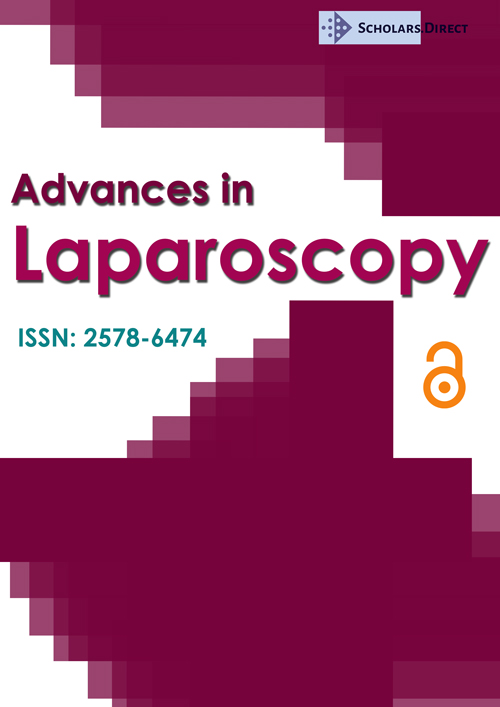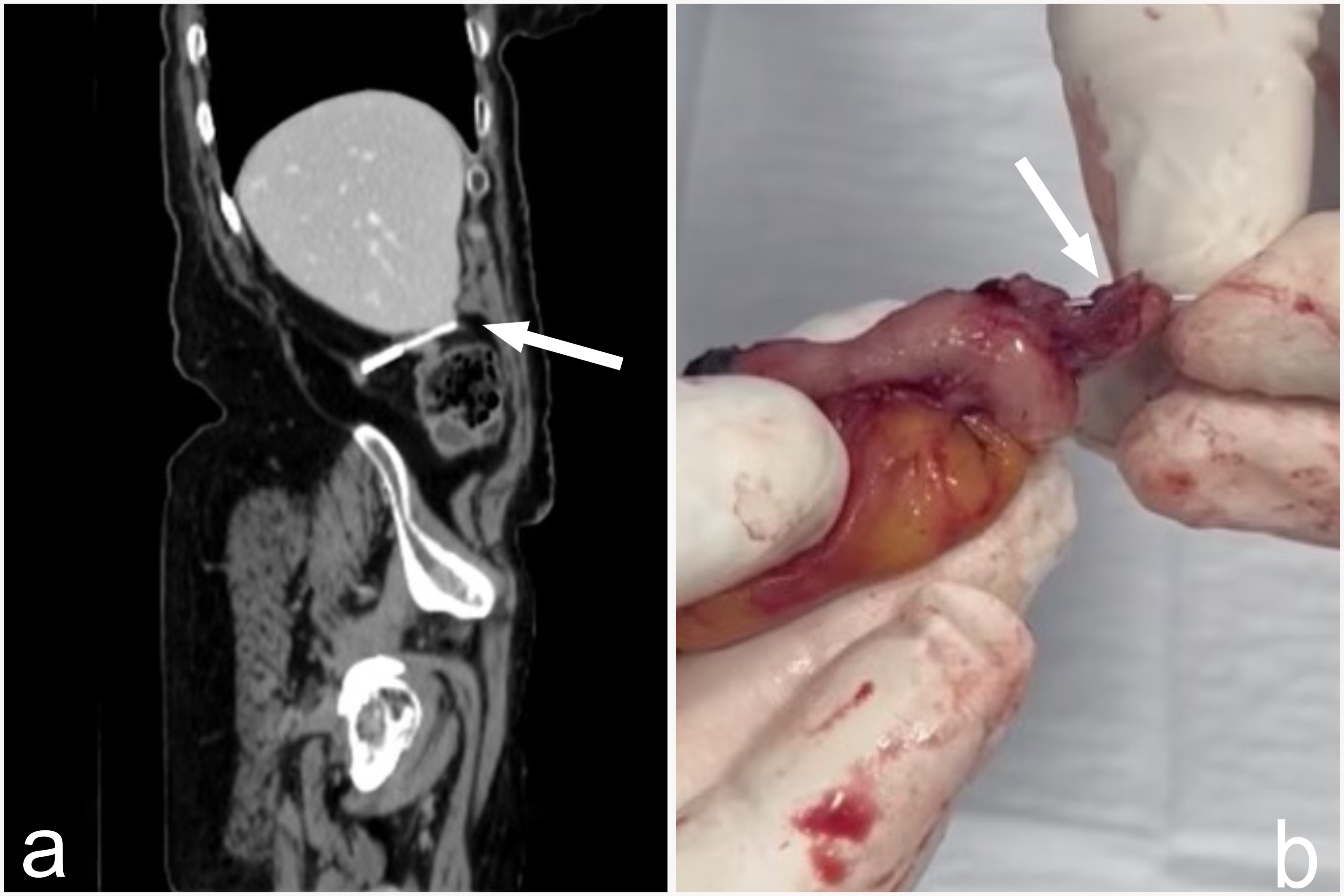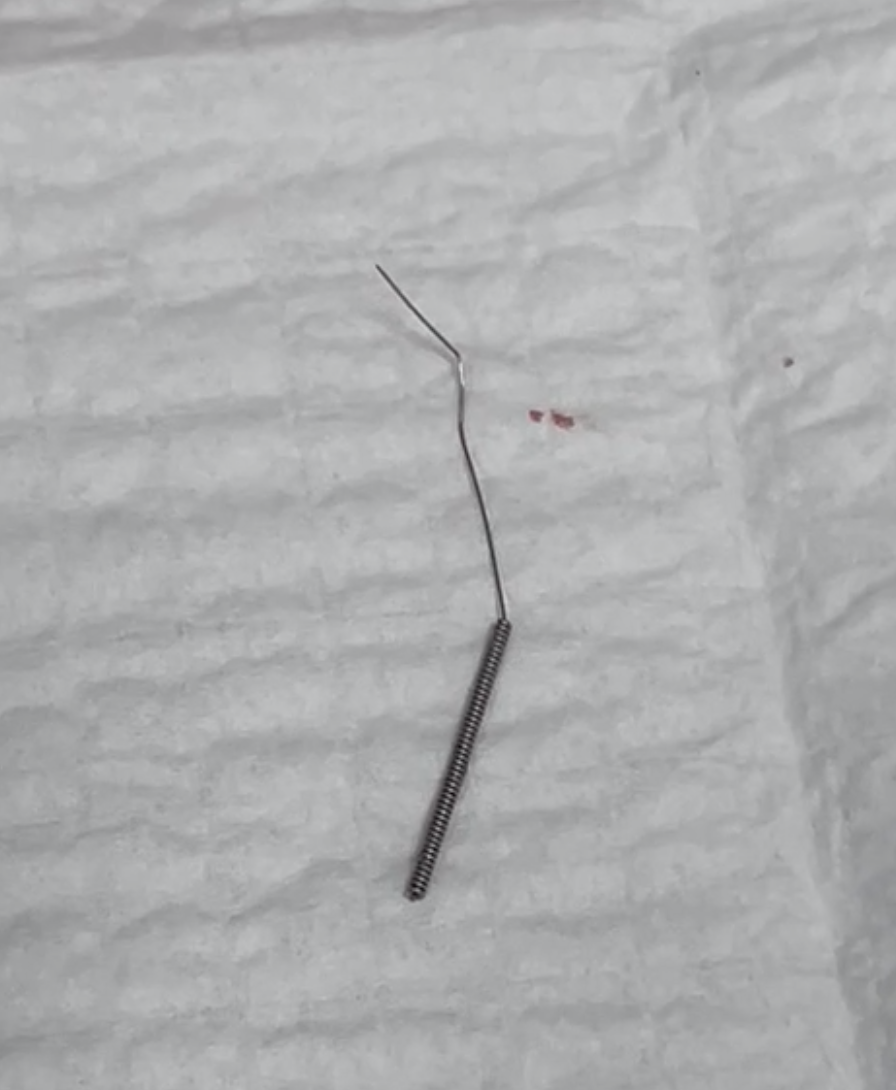Acupuncture Needle Perforation of the Appendix
Abstract
Retention of acupuncture needles has been reported. The occurrence may be unidentified and asymptomatic for various periods of time.An 82-year-old woman presented 10 days following an acupuncture treatment for abdominal pain. Her pain increased and CT revealed an acupuncture needle in the area of the appendix. Laparoscopy revealed perforation of the appendix by an intact needle. The acupuncturist must be alert to the number of needles used during and following the procedure including inspection for needle breakage.
Keywords
Abdominal pain, Acupuncture, Appendix, Foreign body, Laparoscopy
Introduction
Acupuncture is a well-established procedure and is generally safe. Complications are rare, but include insertions site infection and bleeding, internal organ injury, as well as needle breakage and perforation. Retained needles, either broken or intact, may migrate and be symptomatic, but many areunidentified and asymptomatic for variable lengths of time [1]. We present a case of needle retention with migration and perforation of the appendix which was removed via laparoscopy.
Case Presentation
An 82-year-old woman presented to the emergency room with history of increasing abdominal pain. 10 days prior to presentation she underwent an acupuncture treatment by a licensed acupuncturist for non-specific abdominal pain. Her history was remarkable for benign essential hypertension, ischemic heart disease with coronary artery disease with stent placement, cervical spine discopathy, and hyperlipidemia. Two years prior, she had 5 treatments for her upper back and neck pain by the same certified acupuncturist. Her current medications were clopidogrel and lercanidipine.
There was no fever, nausea, vomiting, or other symptoms. Her abdomen was tender with rebound pain on the entire right side. Laboratory findings were normal, except for a leukocyte count of 12,000 × 10 6 /L. CT scan of the abdomen revealed a metallic foreign body in the right upper abdomen in proximity to the appendix and liver (Figure 1a), along with a 5 cm right ovarian multilocular cyst. The decision was made to proceed with surgery. During laparoscopy the appendix was noted to be pierced with a 4 cm acupuncture needle (Figure 1b). There was local inflammation without evidence of bleeding. An appendectomy and right salpingo-oophorectomy was performed. Following surgery, she did well and was discharged on post-operational day 2. Pathology revealed active transmural inflammation of the appendix and a benign ovarian serous cyst adenoma.
Discussion
Complications of acupuncture have been reported, and include bleeding, infection, direct insertion injury, internal organ injury, and needle retention or breakage with or without migration [1]. The incidence of adverse events is unknown since many are likely undetected or unreported. The most common reported adverse events were infection, pneumothorax, central nervous system injury, and ocular injury [2,3]. When needle or needle fragments are retained, the diagnosis may be delayed by years and often did not result in severe organ injury [4]. The published cases of adverse events and needle perforation have been reviewed [1-3,5].
The term migration is used when the needle is located at a site other than its original placement. The mechanism of migration is unclear, but has been described for many different types of foreign bodies including stents, catheters, intrauterine devices, mesh, implants, and screws.
This is the first reported case of a complete needle perforation of the abdomen with migration leading to perforation of the appendix and appendicitis (Figure 2). The acupuncturist was notified of the complication, but did not provide additional information. We cannot be absolutely certain the needle found in the appendix was from the current acupuncture treatment since the woman had several previous treatments 2 years prior to presentation. We can think of However, we do believe that during her acupuncture procedure, a needle was inadvertently left in place and somehow perforated into the abdomen and intra-abdominally migrated. It should be noted that the woman did not have a history of self-harm or psychiatric problems.
Recommendations to minimize adverse events have been put forward. Formal licensing of acupuncturists should be required, along with a comprehensive knowledge of anatomy [2,5]. Other recommendations include continuation courses on the safety of acupuncture and establishing a reporting system for adverse events. Proper patient selection and acupuncture technique was expected to decrease the frequency of adverse events, enhance the influence of acupuncture, and further popularize the benefits worldwide [2,5].
Counting before and after a surgical care has become an integral part of patient care and safety. Surprising, 1 in 8 of surgical procedures have count discrepancies which should prompt a thorough search and reconciliation of retained or fragmented items [6,7]. The acupuncturist must be alert to the number and completeness of needles at the end of the procedure. Counting and inspection of needles should be performed along with written documentation.
In summary, adverse events resulting from acupuncture are uncommon, although the exact incidence is unknown. Proper training and technique would be expected to lower the risks substantially.
Contributions
All authors contributed to the patient’s care and writing of this manuscript.
The authors declare no conflict of interest for this article.
The report contains no identifiable information and was exempt from Ethics committee approval.
References
- Kim TH, Lee MS, Birch S, et al. (2023) Publication status and reporting quality of case reports on acupuncture-related adverse events: A systematic reviews of case studies. Heliyon 9: e20577.
- Xu S, Wang L, Cooper E, et al. (2013) Adverse events of acupuncture: A systematic review of case reports. Evid Based Complement Alternat Med 2013: 581203.
- Norheim AJ (1996) Adverse effects of acupuncture: A study of the literature for the years 1981-1994. J Altern Complement Med 2: 291-297.
- Lewek P, Lewek J, Kardas P (2012) An acupuncture needle remaining in a lung for 17 years: Case study and review. Acupunct Med 30: 229-232.
- Wu J, Hu Y, Zhu Y, et al. (2015) Systematic review of adverse effects: A further step towards modernization of acupuncture in China. Evid Based Complement Alternat Med 2015: 432467.
- Greenberg CC, Regenbogen SE, Lipsitz SR, et al. (2008) The frequency and significance of discrepancies in the surgical count. Ann Surg 24: 337-341.
- Nelson P (2021) Incorrect surgical counts: A potential for retained surgical items. J Dr Nurs Pract 14: 213-224.
Corresponding Author
David Peleg, Department of Obstetrics and Gynecology, Azrieli Faculty of Medicine, Ziv Medical Center, Bar-Ilan University, Rambam Street, Safed 13100, Israel, Tel: +972-4-6828959, Fax: +972-4-6828649.
Copyright
© 2025 Nassar N. This is an open-access article distributed under the terms of the Creative Commons Attribution License, which permits unrestricted use, distribution, and reproduction in any medium, provided the original author and source are credited.






